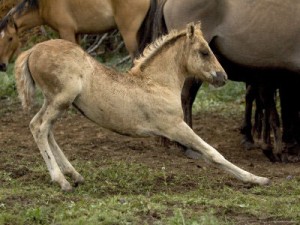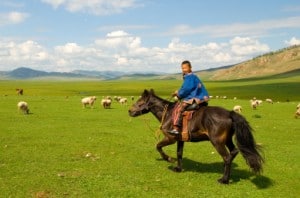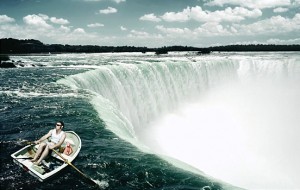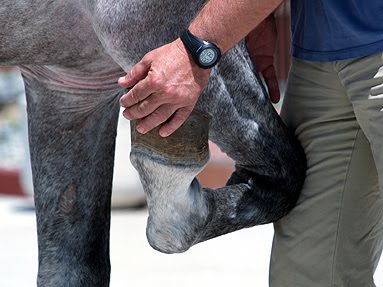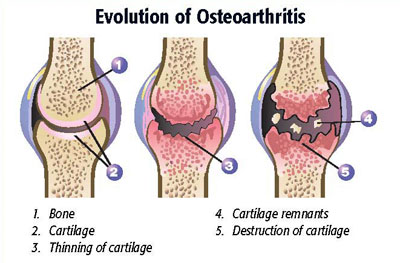If your horse lives mostly in a stall, and has limited opportunities for exercise, it’s certainly a great idea to get him out in an arena and let him stretch his legs. But if that’s something that you’re going to do – and you might be especially tempted to do when you’re pressed for time – I’d like to request one thing of you. Please be careful.
I’m not big on the “natural = best” line of thinking (CLICK here to see an article that I wrote called “Four Words I Dislike”), but it’s undeniable that in their natural condition, horses are unrestrained by encumbrances such as stall walls or fences. When horses were wild, they could roam around as they please, moving through the grasslands, avoiding predators, and being not the least bit concerned about barrel patterns, meter fences or tempi changes. What they certainly never had to worry about was a lack of exercise. Believe it or not, on their own, horses move anywhere from 20 – 50 miles per day!
Domestication changed things for horses. People wanted to ride horses, have them pull wagons, and the like. As such, it was also advantageous to people to be able to catch their horses. Thus, horses got to move from, say, millions of acres of open grasslands on the Central Asian steppe, and had to adapt to things like corrals, stalls, and hobbles. Horses no longer got to exercise freely. But they were still horses. On some level, people had to know that their horses needed exercise (probably because they soon recognized that if they didn’t get out of the stall, corral, or hobbles, once in a while they went nuts).
So, for horses that, due to their owner-convenience-imposed confinement, had a limited ability to exercise, turnout became a way for horse owners to allow their horses to move freely, with their tails in the air, and to buck, play, and, even if just for a moment, recapture some of their nature.
Unfortunately, occasionally, letting a horse run when immediately out of a stall comes at a cost: and the cost can be severe.
 I’m not trying to scare you here. And I’m not suggesting that turnout isn’t an excellent idea. In fact, I think that allowing a horse to move around is a great idea. The more room that a horse has to move around, the better. A 24′ x 24′ stall is better than a 12′ x 12′. A run attached to a stall is better than no run. A large paddock is better than a small one. But when you take a horse from a stall, and turn him out into a large exercise area, he’s most likely going to run, and run hard. And that’s when problems can occur.
I’m not trying to scare you here. And I’m not suggesting that turnout isn’t an excellent idea. In fact, I think that allowing a horse to move around is a great idea. The more room that a horse has to move around, the better. A 24′ x 24′ stall is better than a 12′ x 12′. A run attached to a stall is better than no run. A large paddock is better than a small one. But when you take a horse from a stall, and turn him out into a large exercise area, he’s most likely going to run, and run hard. And that’s when problems can occur.
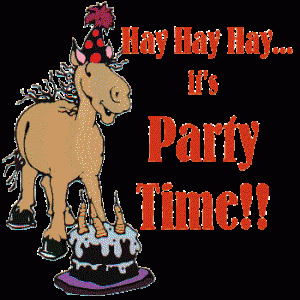 When some horses take off inside an exercise arena, many of them head full speed for the other side of the arena. They’re excited to be in a large space, and they’re excited to see other horses. These horses run as fast as they can until they get to the fence on the other side of the arena. Then they stop, spin, buck and run back at the same breakneck speed. For a horse, that’s real fun (horses enjoy simple pleasures). Unfortunately, such bucking and spinning can be a very real danger to their health. Come to think of it, it can be a danger to YOUR health if you stand to close to them as they kick out in the excitement of being released.
When some horses take off inside an exercise arena, many of them head full speed for the other side of the arena. They’re excited to be in a large space, and they’re excited to see other horses. These horses run as fast as they can until they get to the fence on the other side of the arena. Then they stop, spin, buck and run back at the same breakneck speed. For a horse, that’s real fun (horses enjoy simple pleasures). Unfortunately, such bucking and spinning can be a very real danger to their health. Come to think of it, it can be a danger to YOUR health if you stand to close to them as they kick out in the excitement of being released.
For the horse, however, here’s the problem. When a horse sticks his back leg in the ground, and turns at full speed, he generates a lot of force on the leg. There’s a name for that force – it’s called “torque.” Torque is a twisting force that tends to cause rotation.
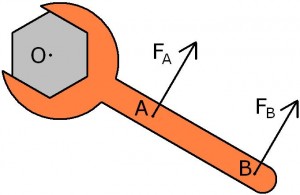 Here’s an illustration of what happens when the horse plants and turns. In the illustration to the left, the horse’s hind leg is in grey, marked by the letter, “O.” The force applied by the turning horse is in orange (it’s a wrench, in this illustration), and the direction of the force is marked by the arrows coming from “A” and “B”.
Here’s an illustration of what happens when the horse plants and turns. In the illustration to the left, the horse’s hind leg is in grey, marked by the letter, “O.” The force applied by the turning horse is in orange (it’s a wrench, in this illustration), and the direction of the force is marked by the arrows coming from “A” and “B”.
If the leg can turn, that is, if “o” in the illustration isn’t stuck, then “o” just turns, along the lines of force. No big deal. But if “o” can’t turn – if it’s firmly attached somewhere – one of two things is going to happen as force continues to be applied. Either “o” is eventually going to move, or it’s going to break due to all of the applied force.
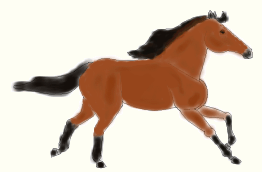 When a horse gets turnout out fresh out of the stall, runs hard, and then turns quickly, the torque shown in the illustration is exactly what gets applied to the hind leg from the force of the horse’s body. Under these circumstances, most of the time the leg turns, and the horse simply runs to the other end of the arena, whinnying happily. Everyone smiles, because a running horse is a most beautiful and impressive sight. But very occasionally (and once or twice a year, for me, on average) disaster strikes.
When a horse gets turnout out fresh out of the stall, runs hard, and then turns quickly, the torque shown in the illustration is exactly what gets applied to the hind leg from the force of the horse’s body. Under these circumstances, most of the time the leg turns, and the horse simply runs to the other end of the arena, whinnying happily. Everyone smiles, because a running horse is a most beautiful and impressive sight. But very occasionally (and once or twice a year, for me, on average) disaster strikes.
Disaster strikes when “o” doesn’t move. When the horse plants his leg into the ground, and the hoof doesn’t turn (say, because there’s a shoe on the hoof that’s digging deep into the dirt), the torque from the turn can shatter the horse’s leg. As everyone knows, a chain is only as strong as its weakest link. For the horse, the weakest links are the smallest bones – in the pastern. In these worst case scenarios, the pastern gives – the force can break the pastern into bits.
Here’s an X-ray of a normal pastern. 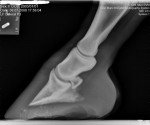 The short pastern bone is in the middle of the picture, between the bone of the foot (the coffin bone) and the long pastern bone, above. It’s in one piece, like it’s supposed to be.
The short pastern bone is in the middle of the picture, between the bone of the foot (the coffin bone) and the long pastern bone, above. It’s in one piece, like it’s supposed to be.
And here’s an X-ray of a fractured pastern.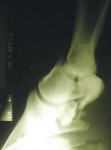 You can see the long pastern bone at the top, and you can make out the coffin bone at the bottom of the picture. But in the middle, where there was once a single pastern bone, now there are several fragments.
You can see the long pastern bone at the top, and you can make out the coffin bone at the bottom of the picture. But in the middle, where there was once a single pastern bone, now there are several fragments.
In some cases, the pieces can be put back together. In these cases, it is even occasionally possible to get a sound horse back, after spending a LOT of time and money (you don’t always have to put a horse to sleep after a bone is broken). But in many cases, the fractures result in the horse being put to sleep, because of the expense involved, and because even if the horse does make it through the surgery, the end result is a horse that will always be lame.
So, what do you do? How do you keep this from happening? Should you stop turning your horse out altogether?
I think that turnout is great. But I think it would be a good idea if you took a couple of extra minutes, and let your horse blow off steam under control prior to turning him loose. So, for example, rather than just taking off the lead rope, and shooing your horse into a breakneck gallop, why not take your horse into the turnout area with a lunge line attached. Let him run around in a circle for a minute or two on the end of the line, while you still have control. He’ll get tired pretty quickly. After he gets his ya-ya’s out, stop him, take the lunge line off, slowly turn, and walk away. Most horses will just stand there – some might even follow you out the ring. But it’s pretty unusual for a horse to go sprinting off after they’ve already been able to act like an idiot for a minute or two.
Horses are pretty clever at trying to find ways to hurt themselves. There’s certainly no way to prevent every accident from happening. The vast majority of the time, when horses race back and forth along a turnout arena fence, nothing happens. But if you take things a little more slowly, and understand a bit about the nature of a horse, you can let your horse get some needed exercise, and, hopefully, reduce the risk that your good intentions end up in a catastrophe.

